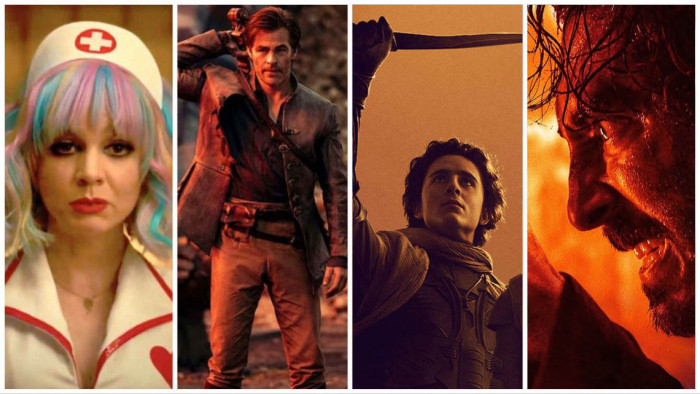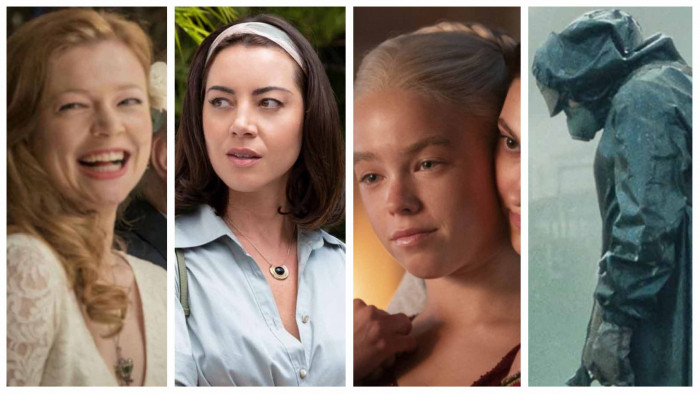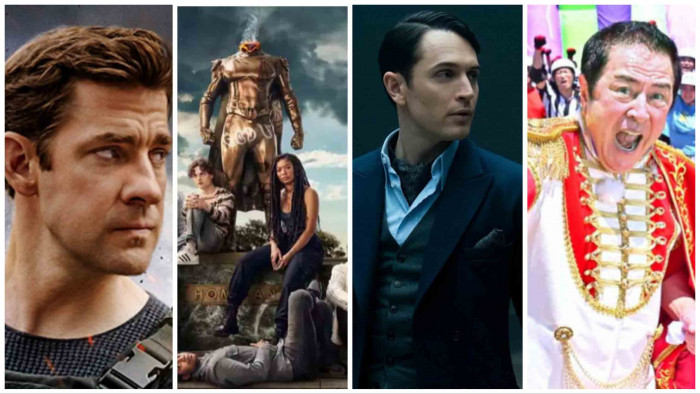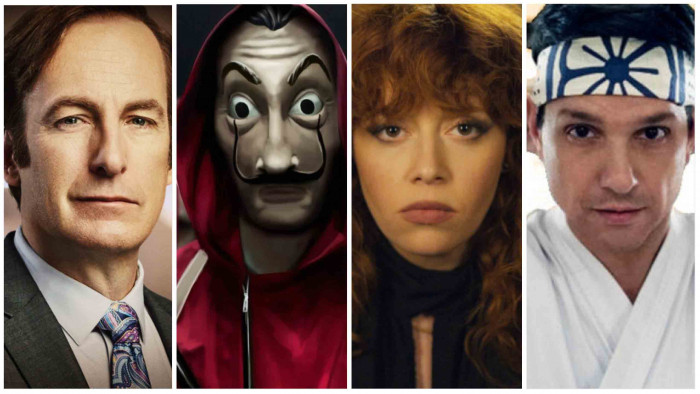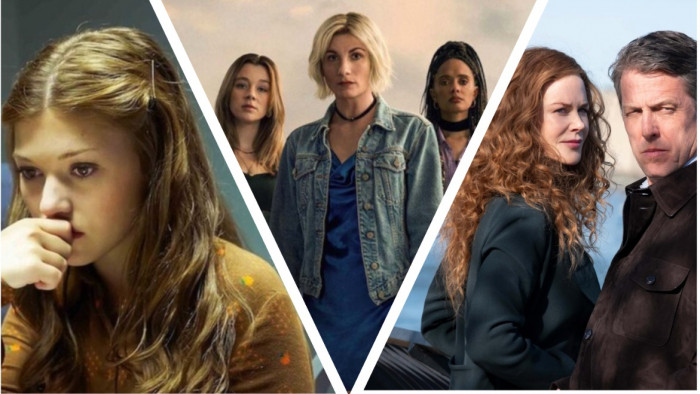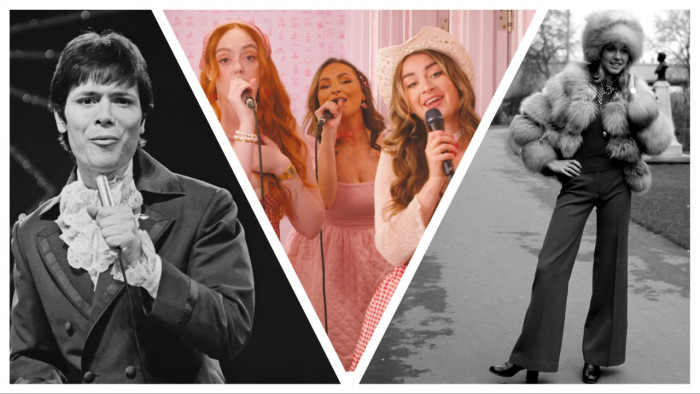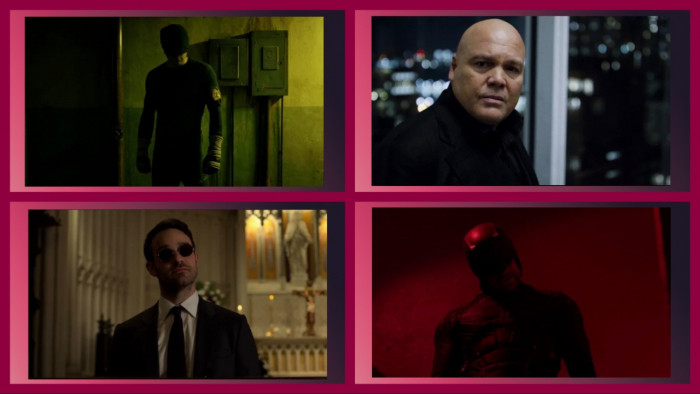The power of sync: how the unlikely setting of 'Love Island' has propelled new artists to fame
Thought 'Love Island' was a cultural wasteland? Think again


If North London-based singer-songwriter Freya Ridings stayed in to watch TV on 8 July, she would have heard her song ‘Lost Without You’ soundtrack a pivotal moment in Love Island.
Presumably, she received a few messages from excited relatives and mates who’d tuned in as well, congratulating her on hearing her song on the actual telly, then she went to bed and thought no more about it.
The next day, she would have woken up to discover that the track had received 20,000 Shazams - the highest-ever on Love Island - before jumping into the iTunes top 30 the day after. Meanwhile Apple Music streams doubled, Spotify streams trebled and, just over a week later, it received its first BBC Radio 1 play, in turn grabbing the highest-ever Shazam numbers for a track in that time slot. The track is currently sitting at number 29 in the charts (and looks set to keep climbing), putting her firmly on the map as a hugely exciting new talent to watch, with radio stations, playlist compilers - and other TV shows - now certain to be paying attention to her future output.
And all off one play, on one TV show.
While Love Island might have dominated the watercooler conversations and tabloid headlines over the summer, probably less noticed was the impact that it had on the music industry. While the show had always thrown in the odd ‘knowing wink’ of a backing track - perhaps an instrumental track with a title that referred to what was going on on-screen, that only the nerdy fan might get - this summer, the show seemed to fully commit to the emotional importance of its soundtrack.
Now, of course, TV shows have done this for years - witness The X Factor’s relentless use of the same ‘THIS IS THE BIT WHERE YOU ARE SUPPOSED TO FEEL UPLIFTED’ subtle-as-a-brick music choices - but Love Island did it in a much cleverer, and ultimately more impactful manner, primarily through the use of piano/stripped-back versions of classic songs.
Equally, of course, this is not exactly a new development - adverts have been leaping upon the ‘get a waify girl to ‘unexpectedly’ cover an old hit’ brigade - but Love Island seemed to do it in a far less cynical manner, choosing genuinely unlikely tracks to use, picking exactly the right songs to soundtrack the moment, and sticking almost relentlessly to brand new talent.
Love Island series producer Steven Yemoah explained the change in focus to industry bible Music Week, saying: “A couple of years ago when we first started we were looking for cool, newish tracks, but also we decided to put in some our favourite tracks to take the piss out of scenes a bit and have fun with the music.
“Then from series two we discovered our own theme. Stripped back versions and covers have become synonymous with Love Island. Or covers of tunes that you might not think are cool, but someone’s put a different take on it and it becomes cool. Also new music in general, we use artists that aren’t particularly mainstream necessarily because we enjoy them, we will go back to them. A lot of viewers have noticed the same artists throughout the series.
“We’re not necessarily about using something current and in the charts. If it’s a good track and it’s on the up, if it’s an album track and it suits a scene then we just put it on, there’s no, ‘It has to be from the last six months or three months’. It’s just good tracks basically. New takes on old songs is something we spend a lot of time researching.”
Another Love Island success story came from Aaron Williams (AKA Foy) performing a version of ‘Give Me The Night’, which was first made famous by George Benson. The reaction was huge and immediate, with more than 12,000 Shazams and 55,000 Spotify streams within 24 hours, while the track surged up the iTunes charts.
But why were Love Island’s choices so successful, and so reactive with the listening public?
Well, it’s almost certainly a combination of three things.

This year’s crop of Love Islanders
Firstly, the fact that Love Island - whatever you think of it - is an unbelievably well-produced show. Despite having ostensibly next-to-no interest in the show’s contents, many were the nights that I ended up staring at the TV, suddenly realising that 25 minutes had passed, having been sucked in to the expertly crafted narrative that the show’s producers had managed to craft despite the fact that literally nothing of any material impact had actually occurred. Somehow, it created constant moments of high drama and emotion out of thin air - aided by the expert curation of the soundtrack. Therefore, if you were into the contents, you’d be desperate to find out what songs had moved you to tears and anger by reaching for the Shazam on your smartphone, so you could relive that feeling over and over again.
Secondly, it’s the fact that getting syncs - the industry term for a song placement (short for synchronisation) - on these types of shows is no longer a thing to be ashamed of, so good acts are keen to be on them. As Yemoah points out, “It’s not just a load of people copping off with each other, it’s a really well made and produced show and the music is part of that. Once you’ve noticed that a show has got a good soundtrack, you want to be associated with it. Made in Chelsea changed things for reality TV, it has a definitive and brilliant soundtrack and made it more acceptable for artists to say, ‘We’re featuring on this TV show’.”
Thirdly, the post-Napster collapse in recorded music sales meant that artists had to reassess how they could generate income from their art. The days of sitting back and waiting for the CD royalty cheques were over, with funds declining, and people looking elsewhere to make a living. The world of sync was a very useful place to start, with this focus coinciding with a new golden age of great TV, and the dawning of a new ‘super ad’, in the form of the John Lewis Christmas campaign.
Not since the Levi’s adverts of the nineties has there been such a collective national interest in what ‘this year’s song’ would be. Abi Leland, company director and music supervisor of Leland Music, who worked on the John Lewis campaigns explains:
“For their 2010 Christmas ad we got Ellie Goulding to cover Elton John’s ‘Your Song’ - this was her first hit so this campaign helped to kickstart her career [it was her highest charting single up to that point and was released following two tracks which failed to hit the top 10]. The same for Gabrielle Aplin [who covered ‘The Power of Love’ in 2012] - and the Lily Allen cover of ‘Somewhere Only We Know’ instantly gave her a number one hit after a while away from releasing music.”
Meanwhile, as the TV landscape has changed, with on-demand streaming services, so the opportunities have opened up.
“Platforms like Netflix and Amazon have generated more opportunities for sync, and also much more interest in soundtracks from the public,” says Leland. “These in turn have changed the way people watch TV and also consume music. People discover music more now from TV shows than they do from the radio. This is a huge cultural change. Twenty years ago when I first started out as a music supervisor, being into film music used to be a bit of geeky thing, especially film score, but now it’s commonplace for all sorts of people from all generations to talk about the music in their favourite TV series.”
Phil Canning, Creative Manager for Film at Universal Music Publishing, describes a similar experience, saying:
“It’s been interesting seeing the impact on our artists profiles after they had plays on Love Island: songs garner more attention, via Shazam and on social media. Other shows like Stranger Things, Peaky Blinders and The End of the F***ing World have given back catalogue artists big spikes digitally. Every few years there is a new franchise such as Twilight or 50 Shades, that have massive sequels everyone will try to pitch to.”
Andrew Howell, senior creative and licensing manager at Warner/Chappell Music, sums up the overall change in attitude over the past decade:
“We’ve seen artists and songwriters become more open to sync deals over the last 10 years or more. It’s not just another source of income that can help pay the bills, it’s also another platform to reach potential fans. Newcomers can see that music from established acts is being used in film, TV, games and ads and it’s become an essential part of helping them connect with the public.”

Stranger Things is one of the many new shows to feature a prominent soundtrack
So, the million dollar question - how do you get your music to be used on these influential shows?
While there are plenty of examples of people writing specifically to be featured on Spotify Playlists (coffee shop acoustic fare and the like), it turns out it’s not quite so easy to get your song in that prime televisual slot.
As Leland explains, “The worst thing you can do as an artist or composer is to try to write ‘sync friendly’ music. The majority of ‘good syncs’ comes down to the perfect marriage of film and music.
“For me, finding the right piece of music or the right composer for a film is largely instinct. I know when something is right because I get that rush of excitement. But it has to come down to good creativity in the first place - a great film to work with in the first place obviously makes my job much easier (and much more enjoyable!).
“And when I’m working on a film I don’t sit there thinking ‘right, let me just dig out all those great sync friendly tracks I’ve been sent’… I’m not saying that you shouldn’t try to push to get a decent sync, but I just don’t think artists or writers should be encouraged to think about sync when they are creating music. They should be left to create the music they want to create, and then the skill should come from the people around them to find them the right syncs.”
Also, beware of simply trying to copy what’s being done at the moment - piano cover versions might work for now, but sometimes a great original song is what’s needed.
“There are trends, such as cool cover versions etc, that become a reliable formula, but are a fresh take on an old song from a new artist,” says Canning.
“It depends on each individual situation and what is trying to be achieved, but there is still desire from the sync world and supervisors to bring new, exciting music to the people, and give those new acts the opportunity of exposure.
“The Lloyds Bank/Fatboy Slim re-interpretation of ‘Praise You’ was a well executed track in the covers trend, but the Sony Bravia campaign featuring Tom Walker’s ‘Leave a Light on’ is a good example of a brand new song/artist benefiting from a big sync. He was building a good fanbase but that sync and many subsequent syncs have truly put him on the map.”
Howell explains simply what the perfect scenario is: “When a sync is done right, an artist and song can have a huge impact and really resonate with the public. It’s not just adverts, we’re seeing popular reality shows put real thought into the music they use, exposing viewers to both new acts and some classic songs. The trick is to align the creative, the artist and the song in a way that truly connects.”
And the good news is that, even if it doesn’t launch you to megastardom, an unexpected sync can enable leftfield, or small acts to be able to have a career that they wouldn’t otherwise be able to sustain.
Canning talks of one of his artists, Jamie N Commons, “who is only just about to release his debut album, but is a maestro in the sync world.”
“He’s been working incredibly hard, out of the usual music industry/media spotlight, making perfect music for ads, trailers, shows etc, and this has enabled him to not just exist, but also develop his own sound and write an album over many many years - when usually a new act is under pressure to deliver an album and release it quickly.”
Howell has his own feelgood story, too.
“I worked with a young songwriter, who was still at uni, who had a piece of music used in a film trailer,” he says.
“It enabled him to pay off his student debt and put some money towards a deposit for a house. So dreams can come true!”
So, you thought Love Island was a cultural vacuum that only makes money for its gormless inhabitants? Well you thought wrong: it’s giving a chance to new artists and helping struggling musicians make ends meet.
Someone get in touch with the Arts Council: they’ve got an award to make.
(Images: ITV/Netflix/Getty)
